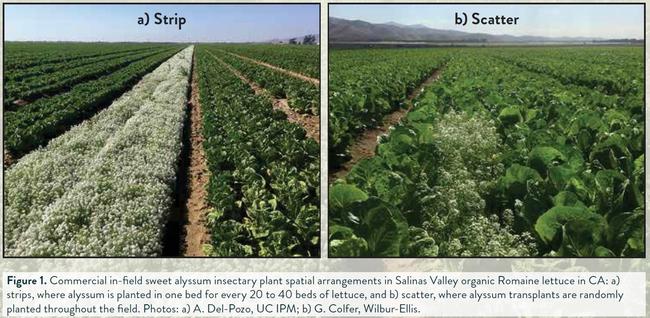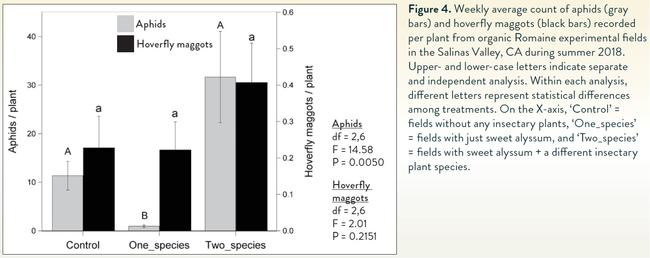Insectary Plants
Aphids are a major pest in conventional and organic lettuce grown on the Central Coast of California. Aphid resistant lettuce varieties and foliar spray applications of non-synthetic insecticides are the most common methods to manage these pests in organic lettuce. Previous research has
shown that intercropping insectary plants promotes the presence of beneficial insects in commercial organic lettuce fields. When flowering, these insectary plants provide alternative habitat and food in the form of pollen and nectar, to beneficials including syrphid flies and parasitic
wasps. Currently, some organic growers plant either single species or multiple species of insectary plants in organic lettuce fields. The main goal of this project was to compare aphid and syrphid fly abundance in commercially-grown organic romaine lettuce with and without insectary
plantings. We wanted to quantify any difference on those densities when comparing fields with one-species to fields with more than one-species of insectary plants. We also documented the phenology of both pests and beneficials in our twelve experimental field sites during the
summer of 2018. Lower aphid densities were recorded in fields with one-species insectary plants. Higher beneficial densities were documented when pest populations were also high. Results from this project corroborate previous efforts on documenting the benefits of using insectary
plants as part of aphid management in lettuce. However, there is still a need to better understand if growers could plant an effective ‘good-bug-blend’ using multiple insectary plant species or just plant the one species of alyssum to promote conservational biocontrol.


Research on insectary plants has been published on CAPCA Adviser Magazine, April 2019, Vol XXII, No 2, p 38-43.
Web access to this articles at
